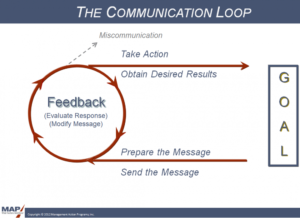CEO Communication Tip: Pause Before Hitting Send
Ever find yourself wishing you hadn’t hit the “send” button? Almost everyone has hastily sent out an email that’s created a time-consuming, needless chain reaction of events. And that’s because many people struggle to communicate effectively in this medium.
If the point of the message isn’t delivered with accuracy, sensitivity and succinctness, the email can assume a body language that betrays its professionalism and intentions. What begins as a quick, easy way to address an issue can evolve into a complex time-sucker, taxing not only productivity but also emotions, employee morale and maybe even company culture.
Got a tough situation to tackle? Treat those challenging emails like you’re crossing a tricky intersection. When in doubt, stop, think, THEN send — or maybe sit on it for a day or don’t send it at all, opting for a call or virtual meeting instead.
The same strategy applies for some of those less important messages you might be sending out to groups of recipients. The more people you “cc:” on an email (even if it’s a short, relatively unimportant message) invites opinions, comments and chatter. For example, an employee in a company’s remote location emailed someone in IT because her fax was down. But she also copied the entire company that was, up until that point, unaffected by her fax issues.Suddenly, hundreds were reading and wondering about the email, possibly even replying, forwarding it on to the person for whom it was best intended, or even sending it to other co-workers to show them how ridiculous it was that they got it in the first place! Ironically, business operations were unaffected until she actually sent this email that needlessly interrupted and involved countless people in her problem. With everyone reading all about her fax trouble, as well as the subsequent “e-activity” from the peanut gallery, hours of time was wasted on this one lady’s email about her fax machine – which had been repaired well before the email chain ended.
Email is a great tool if, like other communication methods, it’s used appropriately and wisely. Whenever you type an email, and especially if you’re debating whether or not to hit the send button, at least ask yourself these questions first:
- Who is the best recipient for this email? Is it truly necessary to include or “cc:” others?
- Does this situation or topic warrant a phone call or virtual meeting? Never use email to avoid or hide from more personal communications when warranted.
- What’s the best way to communicate this message in writing my email? Are my grammar, tone and style of writing professionally reflecting my thoughts and purpose?
- Should I stop and think about this first, putting the email in my drafts folder and letting it sit overnight before sending?
- When I read this email, how does it make me feel? Get a second opinion if necessary.
Download our “Effective Communication Checklist.”



